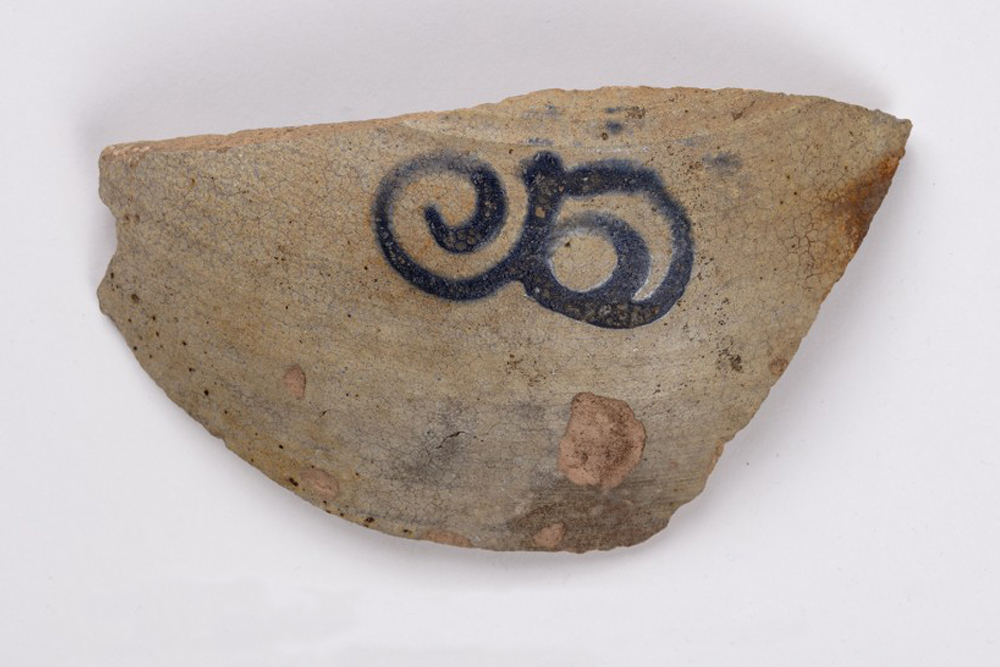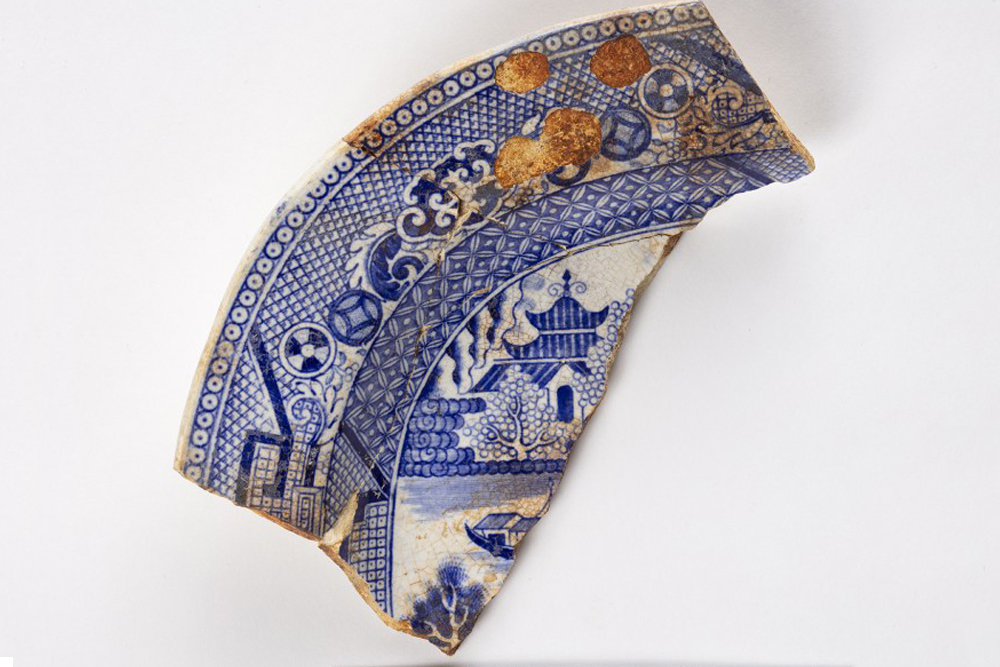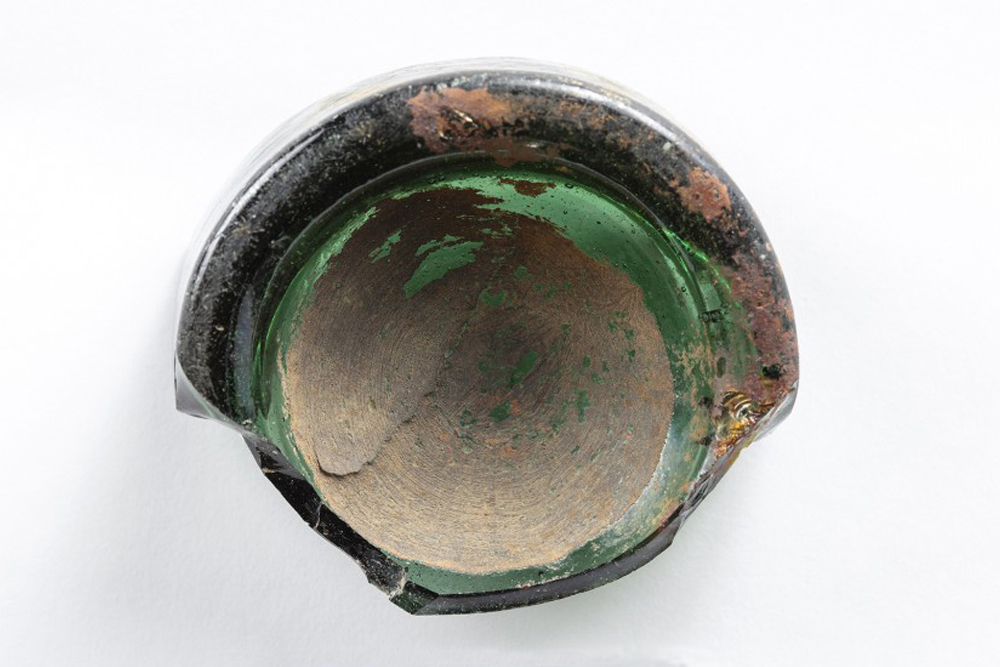Plate
While excavating at the site of Seneca Village in Central Park, archaeologists found a variety of artifacts at the Wilson house. The Wilsons were a landowning family, and William Godfrey Wilson, the head of the household, was marked as a person of color by the 1850 census. Among these artifacts are several fragments from plates, including a sherd from a Blue Willow plate, CV 84.
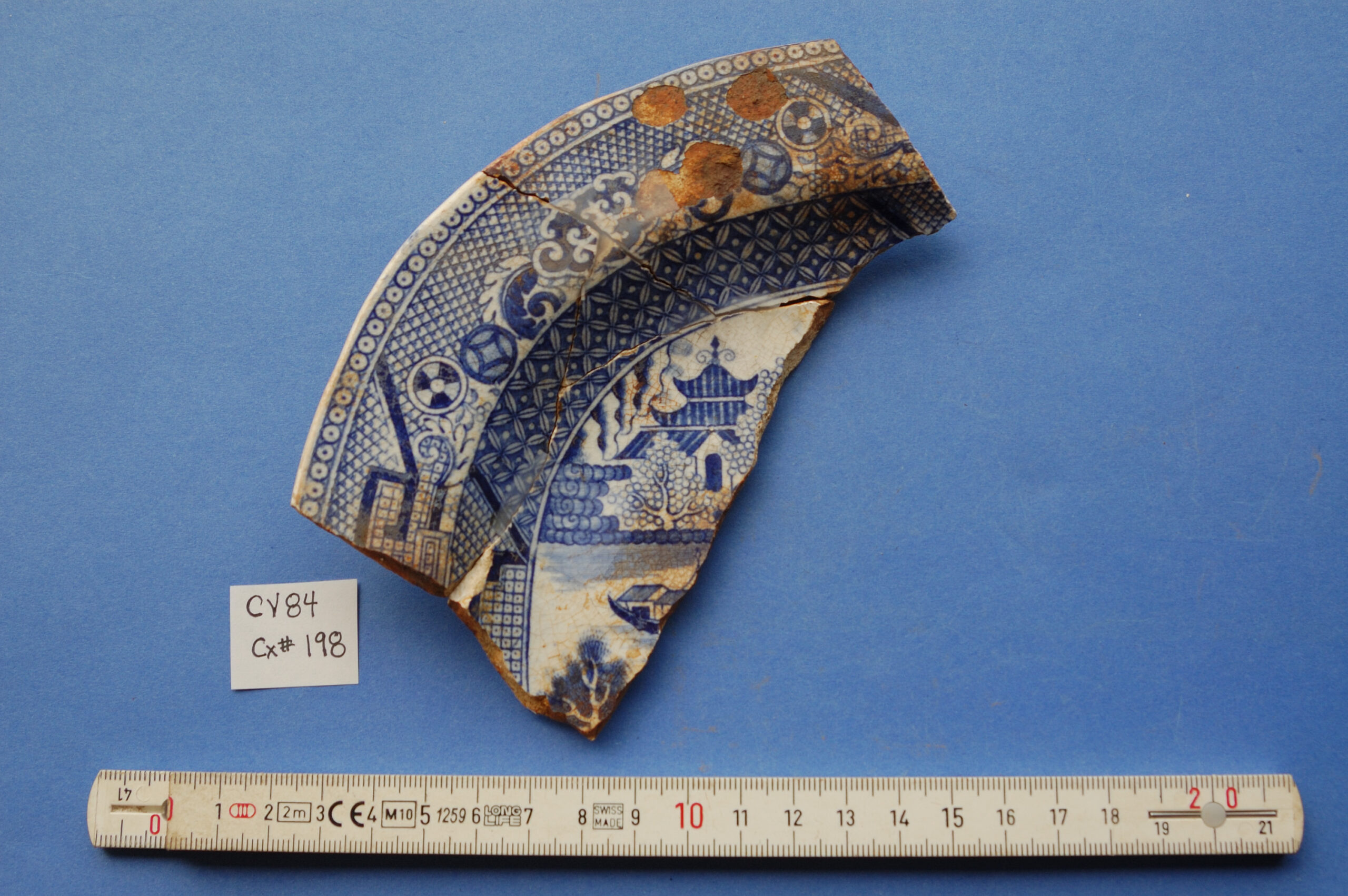
Figure 1: Artifact CV 84, a whiteware plate printed with the Willow pattern, excavated from the Wilson house in Seneca Village. (Photo courtesy of the Institute for the Exploration of Seneca Village History.)
What is CV 84?
This sherd is a piece of a whiteware plate printed with the willow pattern, made of refined earthenware (Wall et al. 2018). On the sherd, you can see a Chinese-style building in the background, and part of a Chinese “junk” boat. Although the decorations are Chinese, the plate was not imported from China. The willow pattern was inspired by plates of Chinese origin, designed and produced by Britain’s Staffordshire potteries (Rogers 2004, 7) and then imported to America. We know that CV 84 was a part of a Willow patterned plate, but we do not know what type of plate it was. The plate was estimated to have a diameter of 8.6 inches, which would technically make it a “twiffler” (Diagnostic Artifacts in Maryland 2002). However, due to discrepancies in the records of archaeologists and archival processes, I cannot determine whether it was a platter or a twiffler. A platter was a larger plate used to serve food, and a twiffler was an individual plate used for meals and/or with tea (a twiffler is smaller than a full-size dinner plate).
Why Willow? What other plates did the Wilsons own?
Why would the Wilsons choose to buy blue and white patterned plates? The willow pattern was used on dinnerware for those who wanted blue and white Oriental-style patterns, but could not afford porcelain (Rogers 2004, 5). Only two other willow plates were found at the site, CV 11, a platter, and CV 10, a muffin (Wall et al. 2018). The other blue and white patterned earthenware plates had different patterns, such as CV 54 and CV 56. This could mean that the Wilsons favored blue and white patterned plates in general. One could conclude that the Wilsons wanted a domestic life similar to wealthier people of that time, meaning they wanted to imitate the porcelain plates of wealthier households. The question that remains is, why did the Wilsons choose blue and white patterned plates? We will never know for sure, but the Wilsons for whatever reason preferred the blue and white pattern, possibly because they wanted plates that imitated expensive porcelain.
How was this plate used? How might the Wilsons have set the table?
This plate was likely for everyday use, meaning it was used for family meals (Wall 1991, 78). While a platter and twiffler would have been used differently, in both circumstances it would be used for carrying food. Figure 2 shows what a full Blue Willow plate looks like.
While sherds from three different willow plates were found at the Wilson house, so were sherds from three other plates, all blue and white but with different patterns. One can imagine how they set the dinner table, perhaps with each person having a uniquely patterned plate (one family member might have a “Palestine” patterned plate, while another could have a “Flow Blue” plate). There might be a larger platter (or platters) in the center of the table, from which food would be served. I wonder, what type of food did the Wilsons eat? Did they always set the table the same way? Was setting the table important to them?
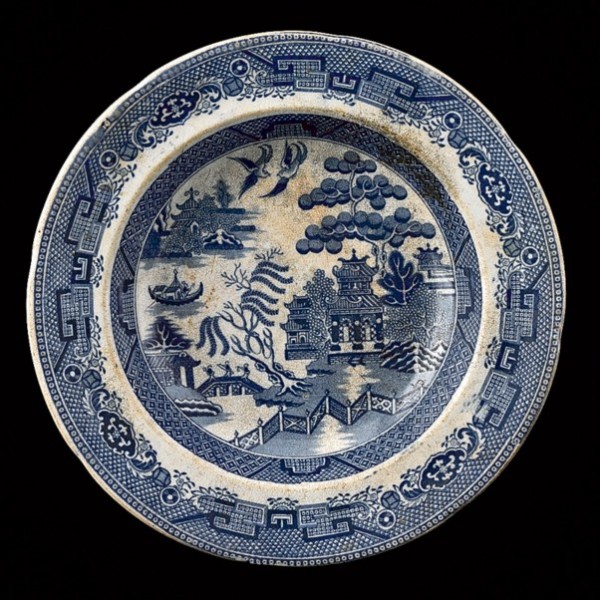
Figure 2: Blue Willow plate, 9 ⅜” in diameter. Recovered from the “Blue China” shipwreck. (Photo courtesy of Chipstone Foundation).
Present day relevance
Why did people spend money on special plates? Perhaps it was because food was precious, so special plates were used. Today, people do not always value food and plates like they once did. Food is often served in styrofoam containers, which are hastily thrown away. Archaeologists found objects at the site of Seneca Village, and used those objects to learn about that community. When archaeologists find styrofoam packaging 200 years from now, what will they learn about us?
Works Cited
Diagnostic Artifacts in Maryland. 2002. “Glossary.” Jefferson Patterson Park & Museum: St. Leonard, MD.
New York State Census (NYSC). 1850. Census Returns for the Sixth Ward of the City of New York in the County of New York. Manuscript, Department of Records and Information, Municipal archives of the City of New York, New York, NY.
Rogers, Connie. 2004. The Illustrated Encyclopedia of British Willow Ware: A Schiffer Book for Collectors. Atglen, PA: Schiffer Publishing, Ltd.
Wall, Diana Di Zerega. 1991. “Sacred Dinners and Secular Teas: Constructing Domesticity in Mid-19th-Century New York.” Historical Archaeology 25, no. 4: 69-81.
Wall, Diana diZerega, Nan A. Rothschild, Meredith B. Linn, and Cynthia R. Copeland. 2018. “Seneca Village, A Forgotten Community: Report on the 2011 Excavations.” New York, NY: Institute for the Exploration of Seneca Village History, Inc. A report submitted to NYC Landmarks Preservation Commission, the Central Park Conservancy, and the NYC Department of Parks and Recreation.


